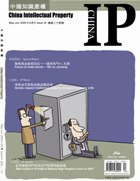
With the rapid development of science and technology, patent technologies are involved in more and more technical standards. Does it necessarily mean that patent infringement is committed when products are manufactured or services are provided according to technical standards involving existing patents? Thus far, there is no specific provision regarding this issue under Chinese law.
Recently, the Guangxi High People’s Court addressed this issue and offered some guidance in a patent infringement appeals case. In March, 2000, the plaintiff, Guangxi Nanning Yongjiang Pharmaceutical Co., Ltd. (Yongjiang), obtained a patent for “A Medical Composition for Treatment of Craniocerebral Trauma.” In order to put the patent medicine into production, Yongjiang participated in the establishment of the quality standard for “Compound Lysine Granules.” During the standard-setting process, Yongjiang affirmed that the formula adopted in the standard was one of the five embodiments stated in their patent specification. In Mar. 2001, the State Drug Administration announced the quality standard and instructions for “Compound Lysine Granules.” A list of the companies that were producing this medicine at the time was also provided, including Yongjiang and Tiangong Pharmaceuticals Co., Ltd. of Henan (Tiangong).
In April, 2006, Yongjiang became aware of the sale of “Compound Lysine Granules” by Tiangong, and believing that the product was covered by its patent, brought an infringement action against Tiangong in Nanning Intermediate People’s Court. At trial, Tiangong did not challenge the patent scope, and therefore, the Court found the patent infringed. On appeal in March 2007, Tiangong raised the defense that it used the patent to comply with the national drug standard, which is a legitimate act, and could not be the basis for infringement. Moreover, plaintiff’s voluntary submission of its patented drug formula to the government for adoption as industry standard should be deemed as consent to others for using it.
Not long ago, the Guangxi High Court gave the final word in this case. In ruling for patent infringement, the Court reasoned that Yongjiang had clearly indicated that the formula adopted in the standard was within its patent scope in the process of setting the state drug standard. This implies no acquiescence on the part of Yongjiang to allow its patent to fall in public domain, or to consent for free exploitation without authorization.
This case establishes that, a patent owner, in order to have its patent incorporated into an industry standard while preserving its patent, must clearly indicate during the standard-setting process which technology is under patent protection. Otherwise, a royalty-free implied license will be deemed to be given to anyone who uses the standard. The Chinese judicial solution coincides with the United States Federal Trade Commission (FTC) in the outcome of the Dell-VESA dispute. In 1991, Dell obtained a patent for “computer bus.” The following year, Dell participated in VESA – a non-profit organization for standard-setting among computer manufacturers. Dell and other members all agreed to adopt a standard design called VL-bus, which was related to Dell’s patent. However, Dell never mentioned its patent during the whole standard-setting process. Representatives from Dell even twice provided written statements, indicating that none of the VL-bus standards will fall in the range of Dell’s patents. Only after VESA officially adopted the standard design, did Dell bring charges against the standard users. The case was eventually settled when FTC accepted Dell’s consent not to enforce its patents.
In 2003, China’s Supreme People’s Court published the Draft on the Provisions on Several Issues Relating to the Actions for Patent Infringement (Draft). According to Article 36 of the Draft: “When a patentee is involved in the process of setting standards, it shall be deemed that the consent is given to letting others use the patent for free if no affirmation has been made that certain parts of the standard fall within his patent protection scope before the standard comes into effect. Therefore, the actions of standard managing organizations, standard setters and standard users shall not be regarded as patent infringement.” Later, due to the initiation of the third amendment of the Patent Law, this judicial interpretation from the Supreme People’s Court was set aside. It is said that the Supreme People’s Court will announce the interpretation as soon as the Patent Law Amendment is passed. By that time, it will be much clearer on how to deal with technical standard and patent infringement issues.
About the Author:
Li Deshan is a patent agent from Unitalen Attorneys at Law.
(Translated by Elina Cai)
|
Copyright © 2003-2018 China Intellectual Property Magazine,All rights Reserved . www.chinaipmagazine.com 京ICP备09051062号 |
|
|



